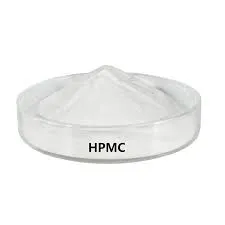
Nov . 23, 2024 15:50 Back to list
redispersible polymer powder wiki
Understanding Redispersible Polymer Powder Properties and Applications
Redispersible polymer powder (RDP) represents an innovative advancement in material technology, catering to a variety of industries, including construction, coatings, and adhesives. These versatile powders are primarily derived from various polymer emulsions that, upon drying and subsequent re-dispersion in water, restore their original properties. This feature makes RDP an essential component in numerous applications, offering enhanced performance, adhesion, and durability.
Composition and Structure
RDPs are typically composed of polymers such as vinyl acetate, ethylene, acrylic, or styrene. The production process involves the spray-drying of aqueous polymer dispersions, resulting in fine, free-flowing powders. When rehydrated, these powders regain their film-forming abilities, typically creating a flexible and durable film that adheres well to various substrates. This unique capability is primarily due to their colloidal nature, which allows RDPs to interact effectively with both organic and inorganic materials.
Key Properties
One of the standout features of RDP is its excellent adhesion properties. When incorporated into construction materials such as tile adhesives, surface coatings, or patching compounds, RDP enhances the bond strength between the material and the substrate. Additionally, RDP improves the elasticity and flexibility of these materials, which can be crucial in environments subject to movement or thermal expansion.
Another important characteristic of RDP is its water resistance. RDP-modified products exhibit better water repellency and durability, ensuring longevity even in harsh weather conditions. Furthermore, these powders help improve the workability of cement-based materials, leading to smoother application and reduced labor costs.
Applications
redispersible polymer powder wiki

RDPs have broad applications across various sectors, with notable uses in the construction industry. They are extensively used in mortar formulations, including tile adhesives, thin-set mortars, and repair compounds. The incorporation of RDP facilitates improved adhesion, tensile strength, and resistance to cracking, making it an ideal choice for both interior and exterior applications.
In addition to construction, RDPs find utility in the production of paints and coatings. In these formulations, they improve the flow, leveling, and film formation, resulting in a smoother finish and superior protection. The addition of RDPs can also enhance the scrub resistance of paints, making them more suitable for high-traffic areas.
Furthermore, the adhesive industry benefits significantly from the properties of RDPs. RDP offers enhanced performance in various adhesive applications, including pressure-sensitive adhesives and laminate bonding. The elastic properties conferred by RDP enable better performance under stress and strain, which is essential in many adhesive applications.
Environmental Considerations
With an increasing emphasis on sustainability, RDPs are being formulated to meet eco-friendly standards. Water-based systems and low-VOC (Volatile Organic Compound) products are becoming more prevalent, aligning with global initiatives to reduce environmental impact. Additionally, the ability of RDPs to utilize recycled materials is gaining traction, further promoting sustainable practices within the industry.
Conclusion
Redispersible polymer powders are a crucial innovation in modern material science, offering a combination of enhanced performance characteristics that cater to diverse industrial needs. As industries continue to prioritize versatility, efficiency, and sustainability, the demand for RDPs is expected to rise. Understanding their properties and applications allows manufacturers to leverage RDP’s full potential, leading to improved product performance and customer satisfaction across various markets. The future of construction materials and coatings appears promising with the continued advancements in RDP technology, bolstering performance while addressing environmental concerns.
-
Versatile Hpmc Uses in Different Industries
NewsJun.19,2025
-
Redispersible Powder's Role in Enhancing Durability of Construction Products
NewsJun.19,2025
-
Hydroxyethyl Cellulose Applications Driving Green Industrial Processes
NewsJun.19,2025
-
Exploring Different Redispersible Polymer Powder
NewsJun.19,2025
-
Choosing the Right Mortar Bonding Agent
NewsJun.19,2025
-
Applications and Significance of China Hpmc in Modern Industries
NewsJun.19,2025







